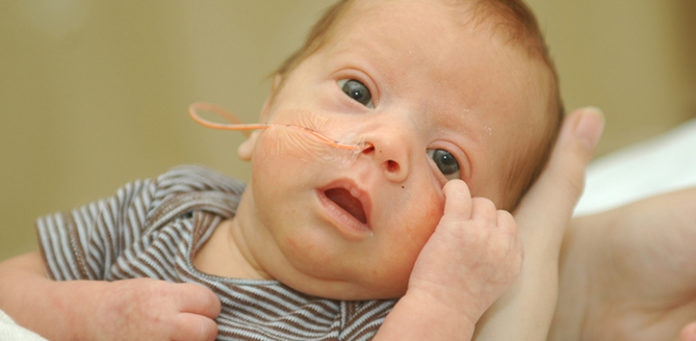ausEE Inc. is once again collaborating with AU Tubie Support to promote Australia’s Feeding Tube Awareness Week which will be celebrated nationally 4–10 February 2018. Sarah Gray, ausEE president says, ‘This is an important week on our calendar when we come together to raise awareness for those living with feeding tubes and the day to day challenges they face.’
Everyone eats differently. Conor and Imogen are two kids who eat differently because they are tube fed. Both kids also get their nutrition through a different kind of feeding tube, as not all feeding tubes are the same. Tube feeding, also called enteral nutrition, is a way food can get into your body if you are unable to eat or unable to eat enough. Food in liquid form or formula is given through a tube into the stomach or small intestine.

3-year-old Conor has a Gastrojejunal tube (GJ tube). For 2 years prior to getting a GJ tube, when he was 15 months old, a Nasogastric tube (NG tube) was first put in place. This was due to his continuous symptom of vomiting, up to 10 times a day. 2 and a half years and many tests later and they’re still no closer to a diagnosis. However, they do know that Conor’s gastrointestinal tract has delayed motility and consequently, he has lost all his oral eating skills and has forgotten how to chew and swallow food.

1-year-old Imogen has a low-profile gastrostomy called a ‘button’. Beginning with an NG tube at just 3 weeks old after struggling with feeding from birth, she was rapidly losing weight and by the time she was 12 weeks old, she had stopped feeding orally completely. Just before she reached 8 months old, she had a Gastrostomy tube (G tube) inserted or as it is often referred to, a PEG (percutaneous endoscopic gastrostomy). After 2 weeks, it was dislodged and in an emergency surgery, a second PEG was put in its place. A week later, the surgeon noticed that the PEG was
moving and being pushed out by her body, especially when she vomited, which was still multiple times a day. The next day, a third surgery took place where they replaced her PEG with the ‘button’ she has today. Imogen’s had many diagnoses throughout her first year but they still don’t have all the answers. She has been diagnosed with GERD, gastroparesis, allergic colitis, severe oral aversion, dysphagia, suspected aspiration and sensory issues.
Sarah says ‘There are many reasons why babies, children or adults may require feeding tubes. We aim to raise awareness and offer support to these families.’ ausEE is the National charity for eosinophilic gastrointestinal disorders, just one condition that may require a patient to have a feeding tube inserted to meet their nutritional needs. ‘This week is about bringing everyone in Australia together who has a feeding tube, whatever the reason may be.’
Those living with feeding tubes who are looking for support are invited to join AU Tubie Support on Facebook at https://www.facebook.com/groups/Autubies or visit http://www.ausee.org/feeding-tubeawareness-week for more information.










